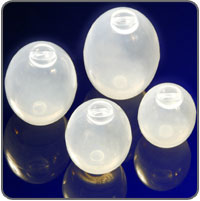
Scientific Editor: Editorial Board ISUD website
What is a Testicular Implant?
The absence of testis causes psychological trauma to men regardless of age. The insertion of a testicular implant (artificial testicle usually made of silicone or balloon filled with special liquid) can help reduce or eliminate this problem.
When is a Testicular implant inserted?
The testicular implant is placed in cases of primary testicular absence, as in anorchia or cryptorchidism, where the testicle is inside the abdomen and cannot be located or has shrunk. It is also inserted in cases when testis is removed due to malignancy or necrosis following neglected torsion.
What preparation is required?
The preparation involves the basic preoperative blood tests and a chest X-ray. The patient should have followed the basic preoperative instructions, i.e. fasting for eight hours before surgery, no water intake and no smoking. In patients with chronic diseases, the treating physicians see that the patient is controlled prior to surgery.
How is the procedure performed?
The procedure is usually performed under general and, more rarely, spinal anesthesia. During surgery, a small incision is made in the hemiscrotum and the testicular implant is inserted at the point where the testis should be normally located. Testicular prostheses are manufactured with a special slot, which is fixed to the scrotum with a supportive suture, so as to prevent displacement of the insert into the scrotum.
The average hospital stay is usually 1 day.
What about after the procedure?
On discharge you will receive instructions regarding the following:
- If you are taking anticoagulants, when it is safe to resume treatment.
- When you can resume vigorous physical activity and return to work.
- The antibiotics you receive postoperatively.
- The postoperative wound care.
- If there are non-absorbable sutures, they should be removed in seven to ten days after surgery.
What is the impact on patient's life?
The majority of patients are not facing any problem after surgery. Complete healing usually occurs within 10-12 days and it usually takes one week until resuming to full activity. The patient can resume to a typical office work about 3-4 days after surgery.


